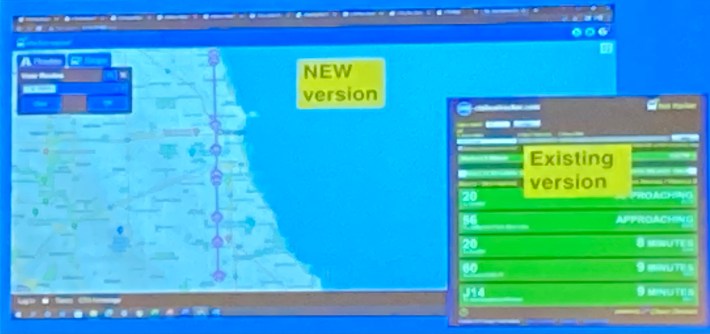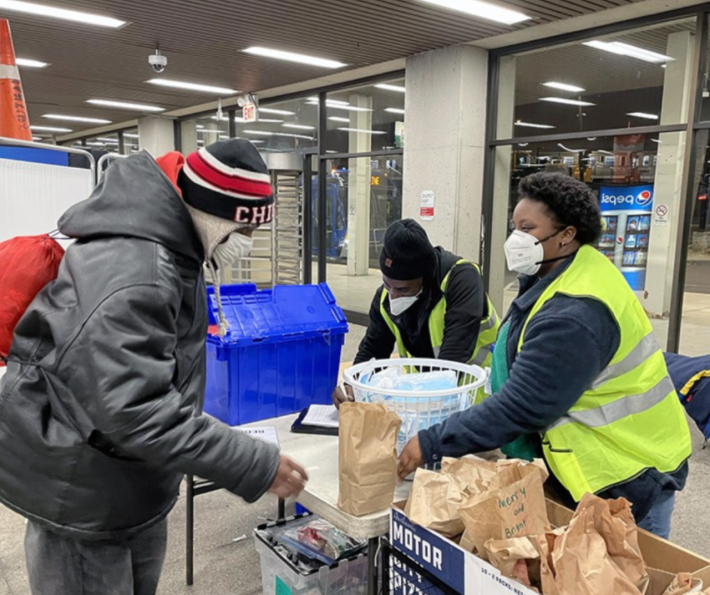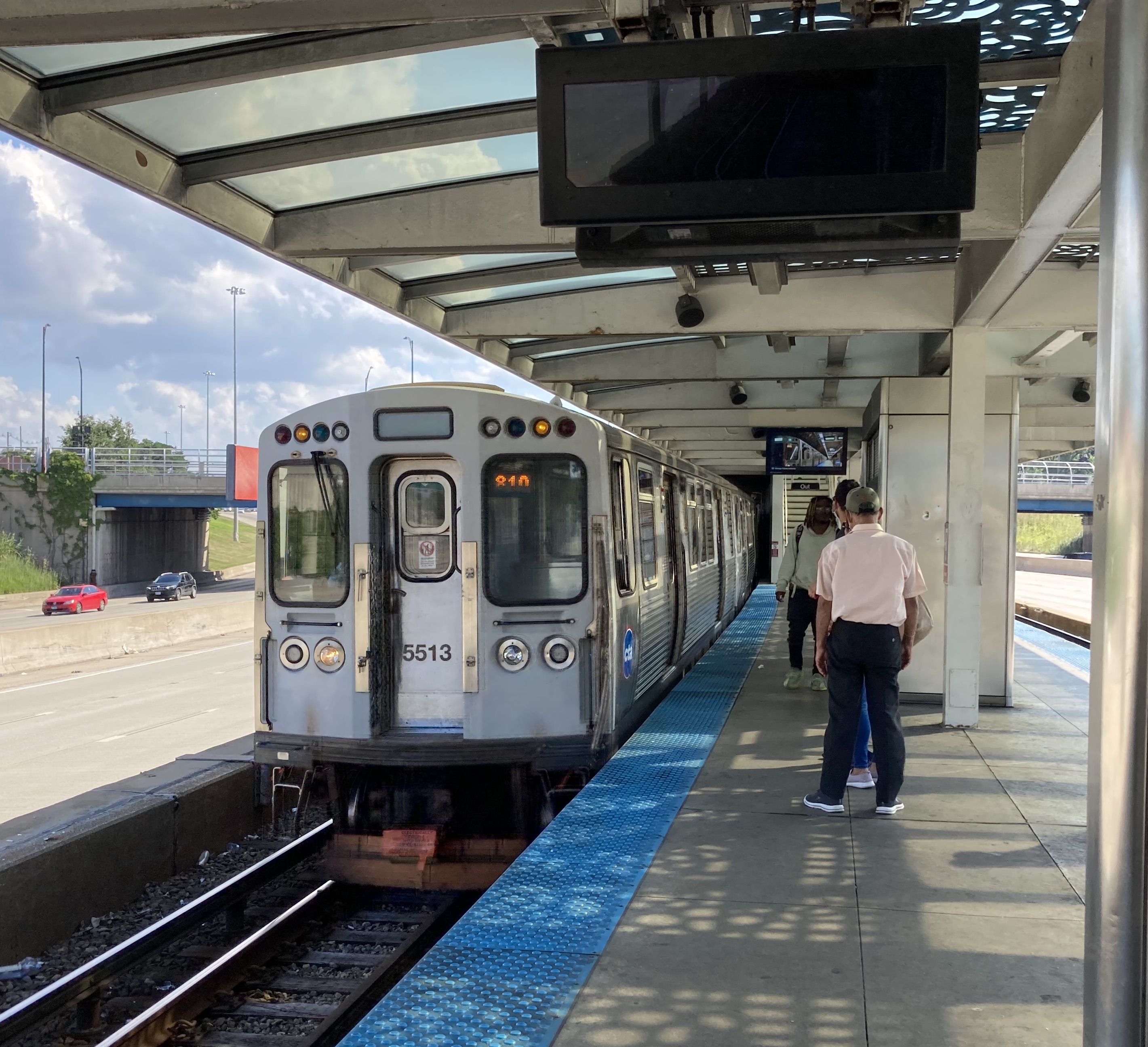In June, Streetsblog Chicago ran an op-ed asking the Chicago Transit Authority to stop acting as if it hadn't cut service due to staffing shortages, and instead adjust its schedules and Bus and Train Tracker apps to make them align with reality. "It’s time for the agency to take a pragmatic approach to its labor challenges, and be realistic and transparent about how just much service it can actually provide... It must change its published timetables so that 'scheduled service' and actual bus and train runs begin to at least remotely resemble each other."
During CTA president Dorval R. Carter Jr.'s speech today at a City Club of Chicago event, he made it clear that the transit agency got the message, not just from us, but from everyone else in Chicago who's fed up with unreliable and unpredictable service. According to Carter, a survey of thousands of current and former CTA riders found that their biggest areas of concern with the system included "wait times for bus" and "accuracy of trackers."
Carter unveiled a new action plan for improving service, safety, and customer experience as the system recovers from its COVID-19 ridership slump, titled "Meeting the Moment: Transforming CTA's Post-Pandemic Future." Two of the five pillars of the report are "Deliver reliable and consistent service" and "Upgrade digital tools to improve rider communication." In his talk, Carter indicated that the transit agency plans to do pretty much what Streetsblog and others asked it to do.
Today's speech didn't begin promisingly, as Carter repeated Mayor Lori Lightfoot's and the CTA's oft-repeated, extremely misleading party line that, despite a 70 percent slump in ridership during the 2020 Stay at Home period, "We did not reduce our normally scheduled bus and rail service." The word “scheduled” is doing the heavy lifting in that sentence. While it's true the agency didn't change its scheduled service, the amount of service that it actually provided dropped significantly. For example, one data analysis from earlier this year found that only about half of scheduled Blue Line runs were actually materializing.

But Carter was honest about that fact that, largely due to COVID-related absenteeism, worker attrition, and hiring challenges that are impacting many different fields, especially the transportation sector, during the Great Resignation, "Our service is not meeting our high expectations for reliability and wait times."
Carter outlined efforts to increase the number of available bus and train operators. These include directly hiring full-time bus drivers, moving more than 300 part-time operators to full-time jobs; and rehiring retired bus drivers for part-time work. He also noted that the agency has partnered with Olive-Harvey College on a program to train bus operator job applicants. "Just last week we brought in a new class of 80 bus operators," he said. However, he warned that the CTA won't "cut corners" when preparing these employees to safely operate on Chicago streets so, "our efforts will take longer to bear fruit."
Next Carter discussed the launch of the service optimization Streetsblog and others asked for, which is launching this month and will be in place through next spring. The "Meeting the Moment" plan states, "We will be taking strategic steps to better match our scheduled service with the service we are currently delivering by reducing the amount of scheduled service which currently goes unfilled."
"This is not a service cut," Carter insisted during his talk. "We are realigning our service for more consistent wait times. With these schedules, customers will be able to to confidently plan their trips." He added that while the schedule adjustments will mean somewhat longer – but more predictable – headways between daytime runs, midnight to 4 a.m. schedules will be unchanged, because these are the runs that are most likely to be ridden by transit-dependent essential workers. He said this reflects the action plan's focus on transit equity.
As far as the "Upgrade digital tools" pillar, Carter teased that improvements to the bus and train tracker apps will be announced in the near future. The action plan states, "CTA will enhance bus and rail tracker feeds in coming months to improve our communication and lower the instances of 'ghost' buses and trains. Part of the improvement will come from service optimization efforts, but we are also making other enhancements to the tracker themselves to assist in providing customers with accurate wait times and fleet locations." Carter showed an image of a future Train Tracker screen that suggested the new version will show the exact, real-time locations of vehicles on a map.

Carter also mentioned that the agency will be piloting a "Chat With CTA" or "ChatBot" feature. He said these will provide customers with more real-time info, or the ability to more easily report issues, such as trains that need cleaning.
In addition to unreliable service and ghost runs, the CTA survey respondents mentioned crime as a major concern. That's understandable, since a recent Sun-Times analysis found that the number of violent incidents on buses and trains is currently at the the highest level in a decade. There were some particularly tragic and troubling headlines in recent days, including the fatal shooting of Diunte Moon, 29, early Saturday morning on the Red Line at 79th, and the stabbing of a 39-year-old man in the neck Tuesday night during an argument on Fullerton 'L' platform.
Carter discussed the action plan pillar "Enhance safety and security of our riders," with the goal of addressing "crime and unruly behavior on the system." He noted that the CTA recently announced more policing of the system, including K-9 units with dogs, and the number of unarmed security guards in the system was recently increased from 200 to 300. He added that the transit agency will be addressing fare evasion, which he said often leads to other lawbreaking, with strategies like higher fare gates in some locations. In response to the disturbing increase in attacks on CTA employees during COVID, bus operators will also get more protective safety shields.
The CTA president also acknowledged the recent increase in illegal activity on trains such as smoking, drinking, and drug use. "Individuals are using CTA cars as night clubs, as hangout spots, as restaurants, and, sadly, as their homes." He said that partnerships with social service organizations like the Night Ministry have proved helpful for providing outreach and assistance to unhoused people sheltering on trains. "We are planning proactively for this winter" by increasing the scale of these partnerships, he promised.

Many CTA riders have complained about dirty and unsanitary conditions in stations and on trains during the pandemic. Carter noted the action plan includes the pillar "Improve customer experience at facilities," and promised the agency will be increasing janitorial services. He said 28 stations across all lines will be getting Refresh & Renew program makeovers, including repainting and other cosmetic and lighting improvements.
Carter also heralded the rollout of nine electric buses, and the popular new 7000 series railcars. "The future of the CTA is strong, and we are prepared to meet the moment," he concluded.
So will the agency actual follow through on its promise to make its schedules reflect reality, and bust the ghost vehicle problem? Let's keep our fingers crossed, and hold the CTA accountable if it fails to significantly improve service, reliability, safety, and sanitation.
Download the "Meeting the Moment: Transforming CTA's Post-Pandemic Future" action plan here.



